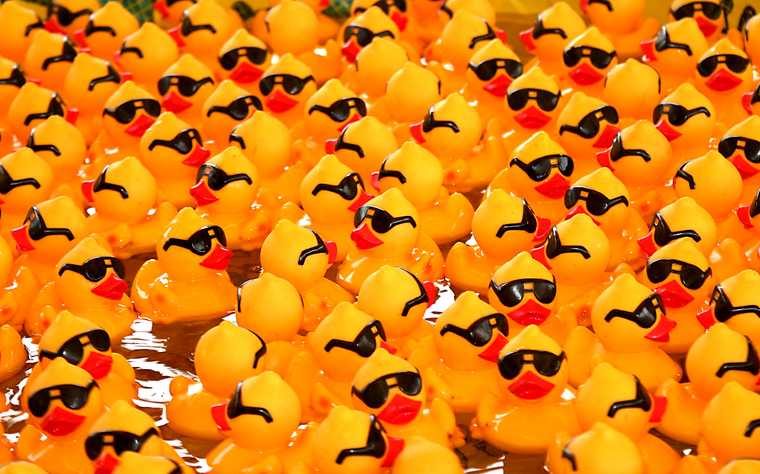Rubber Ducks and healthcare
Rubber ducks and software have a long-standing relationship.
Photo by David Dennis, CC Attribution-ShareAlike 2.0 Generic
Debugging
Rubber ducks are well known for their listening skills. Rubber duck debugging, as mentioned in the book The Pragmatic Programmer, is a time-honored tradition of explaining problems to inanimate objects in the certainty that explaining it out loud will help yourself, and strangely, it often works.
Ocean Currents
Rubber ducks are also known for their resilience and travels upon the ocean currents. When I was a kid, I read about a shipment of rubber ducks, and a few other types, that had spilled into the ocean in 1992. I loved reading that story years later when reports started coming to the scientists about all the fantastic places these rubber ducks had turned up.
As the ocean currents spread rubber ducks across the world, I wonder how many years these floating ducks will stay in circulation for years to come.
I’ll come back and touch on these floating world travelers again in a bit.
Healthcare industry
When I worked as a software developer in the healthcare industry, the one constant I saw was bad data. This bad data was typos, accidental entries in the wrong field, plain miscategorization, as well as incomplete patient identifiers, and many other things.
My job was to process as much of the data as I could automatically following standards, and then to build efficient pipelines for non-conforming or suspicious data to be reviewed by medical professionals and then to be corrected if possible by medical professionals, or if the data was so bad to kick the data back to the data provider as just being too unreasonable to even attempt.
I expected a certain percentage of anomalies from each data provider and over time that become one of the software’s measurements for whether to kick the data back or not. Now the horrible thing about kicking data back, is that the software developers have zero ability to fix any of this data and they need medical professionals to do that. Medical professionals are expensive, so some particularly unaccommodating data providers wouldn’t fix any data. When the higher-ups on both sides get involved and dust started flying, some of the time it become our job to accept bad data, which is then transferring the problem of fixing data to our medical professionals. Not being the original medical professionals, it made it really hard for them.
Further, by accepting bad data, we’ve just accepted to identify a patient by the wrong identifiers when coming from that particular data provider in the hopes that we can clean the data up before passing it on. Wrong identifiers could be name, address, and anything including the most famous American identifier: the Social Security Number. The SSN is a terrible identifier because some people don’t want to give theirs to medical professionals so they make up a fake SSN, or they just plain don’t give any number (I prefer no data to wrong data in this case), or they typo something. However it happens, the SSN was wrong a LOT. I’m picking on the SSN specifically because it’s not a good identifier, but most of the country thinks it is.
Healthcare rubber ducks
Wrong data is the rubber ducks of the healthcare world. Healthcare records are about as permanent as any record for anyone in America, and an anomaly (a mistake) in entering data might be spread about to any other used healthcare provider.
It’s no different from telling ten people each a different piece of information, and seeing whose version of the information is the publicly known version.
By throwing a rubber duck into the ocean or an unique piece of healthcare information into that world, you can analyze the ocean currents or figure out what healthcare analytics are happening.
Summary
My point isn’t about healthcare specifically, I’ve just happened to work on that software. Anywhere in the software industry that data retention and sharing is a priority, artifacts of bad data appear and are spread around like rubber ducks on the ocean.
